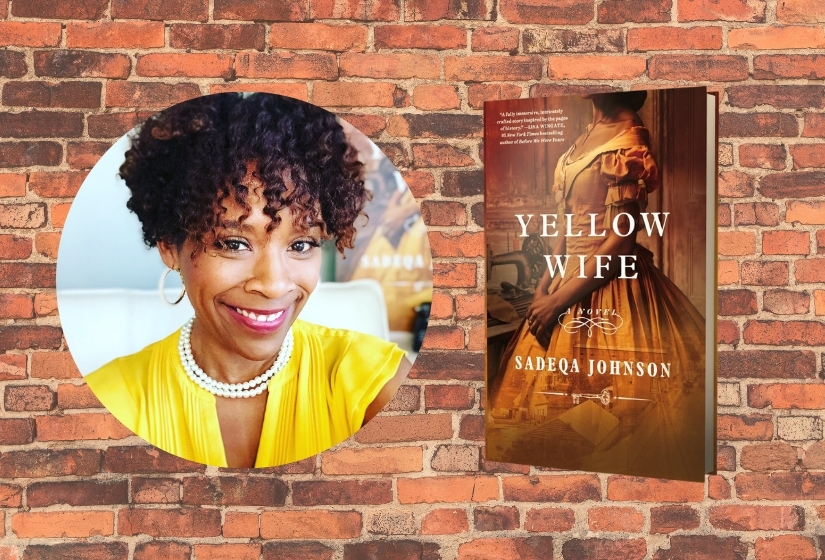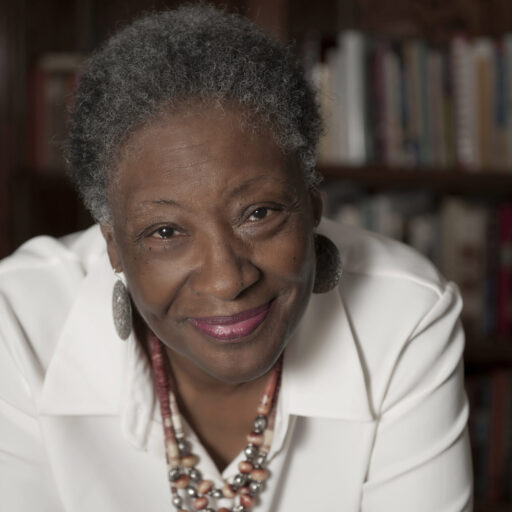
It was my pleasure to work with Sadeqa Johnson when she attended Hurston/Wright Writer’s week several years ago. Sadeqa was a star writer in a strong class of writers. Her new novel Yellow Wife is a historical novel inspired by the life of a real-life enslaved Black woman whose life was both a tragedy and a triumph. I recently spoke with Sadeqa about the novel and the woman who inspired it.
1. Who was the real woman who inspired Yellow Wife?
In my research, Mary was described as an enslaved mixed-race woman who arrived at the Lumpkin jail as a girl. She would birth five of Robert Lumpkin’s children. It was said that he treated her and her children as family. Mary eventually acted as his wife, helped him run his businesses, and took his last name. He formally emancipated Mary after the Civil War, married her, and sent two of their daughters to a finishing school in Ipswich, Massachusetts, where they passed for white. It is said that Mary had some contact with the enslaved at the jail compound. On one occasion, she smuggled a hymnal to Anthony Burns, the most publicized prisoner at the jail. When Robert died, he left all his money and real estate to Mary. She, in turn, leased the land to Dr. Nathaniel Colver, a Baptist minister who used it as a seminary school for the newly freed. This school would later become Virginia Union University. Mary went on to open a restaurant in Louisiana with one of her daughters. She died in New Richmond, Ohio in 1905.
2. What are the special requirements of a historical novel when you are moving between fact and fiction?
I took my time in researching the details in Yellow Wife. I spent countless hours visiting plantations, scouring through newspaper articles at the Library of Virginia, and reading books that were written by people who were enslaved. It was important to me to get the details right. I also had a Ph.D. student in African American studies read through the novel before publication to make sure I selected the correct word choices and that the book felt as authentic as possible. The fiction is born from the facts. I use what I learned about the people, places, and things and then let my imagination do the rest. I trusted my intuition, and even though I outline I let my characters lead the way.
“I took my time in researching the details in Yellow Wife. I spent countless hours visiting plantations, scouring through newspaper articles at the Library of Virginia, and reading books that were written by people who were enslaved. It was important to me to get the details right.”
3. Pheby’s status as an enslaved woman is elevated because she is the mistress of The Jailer. But she remains without agency or freedom. What were the challenges in creating her character?
It was a challenge for me to walk that thin line between her being elevated as the mistress and still being treated at times as his property. I had to be careful with her feelings and when she got too comfortable in her position, I had to choose to pull the rug from underneath her. As I was writing the story, I kept wondering if she loved the Jailer at all or had any affection for him as the father of her children and provider. I still don’t know. What I did know was that getting her children to freedom trumped everything else and that fact was what helped me move her through the story.
4. At what point in the writing and imagining did you feel that Pheby had fully revealed herself to you?
I spent a little over three years with Pheby in my head and she evolved slowly and over time. It wasn’t until the book was ready for submission that I thought I fully got her down on paper. It took many drafts for me to get to the heart of her. It’s one of the things I like best about writing, every day when I show up more is revealed. I am currently working on a new novel and in the beginning, I kept thinking about Pheby. When you live with someone for so long, and live in another world for so long, it is tricky to let them go. I think all writers feel that way. Our characters go to bed with us and greet us in the morning for as long as we’ll have them.
5. How were your feelings about the lives of enslaved women changed and impacted by writing the novel?
I got to know them a little better. It was a very humbling experience for me to see how resourceful these women were and how they moved through the world. They depended upon one another and could make something out of nothing. It was a real honor to be chosen to tell this story, and pay homage to the women who sacrificed so much so that I could be here. I’m in debt and grateful.
6. What is your most recent great read?
There are so many books that I love for so many reasons. Lately, I’ve been knee-deep into Attica Locke’s highway 59 novels. I finished Bluebird, Bluebird and ran straight to the bookstore for Heaven, My Home. She is such a fantastic writer, I find myself rereading whole paragraphs. I feel like such a fangirl. Prior to Locke, I devoured Vanishing Half by Brit Bennett and loved it.
Buy Sadeqa’s Book: Yellow Wife: A Novel

Marita Golden is the author of over 20 works of fiction and nonfiction. She is Co-founder and President Emerita of the Zora Neale Hurston/ Richard Wright Foundation. As a teacher of writing, she has served as a member of the faculties of the MFA Graduate Creative Writing Programs at George Mason University and Virginia Commonwealth University and served as a Distinguished Visiting Writer in the MA Creative Writing Program at John Hopkins University, and at the University of the District of Columbia. She has taught writing workshops nationally and internationally to a variety of constituencies and is a writing coach, workshop presenter, and literary consultant.



